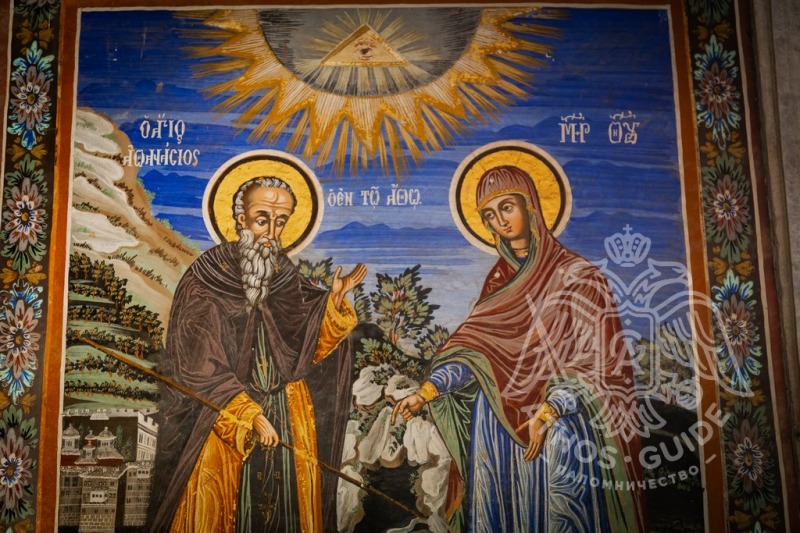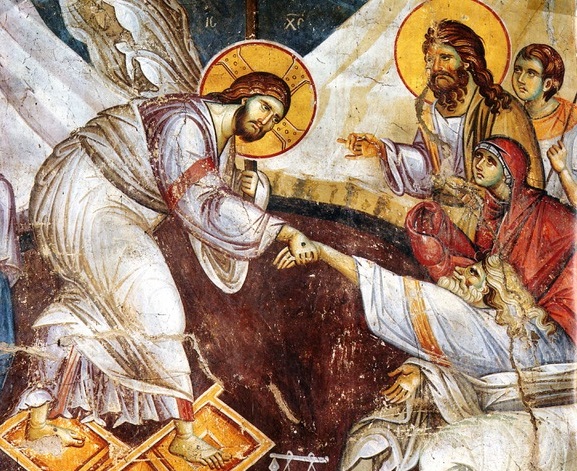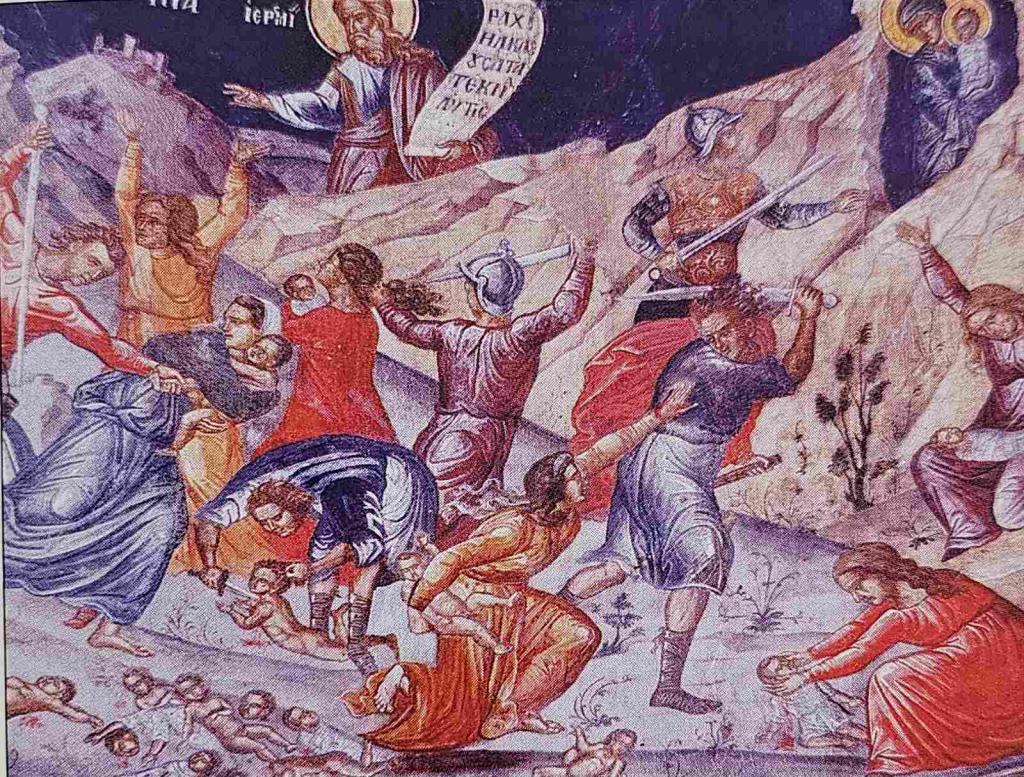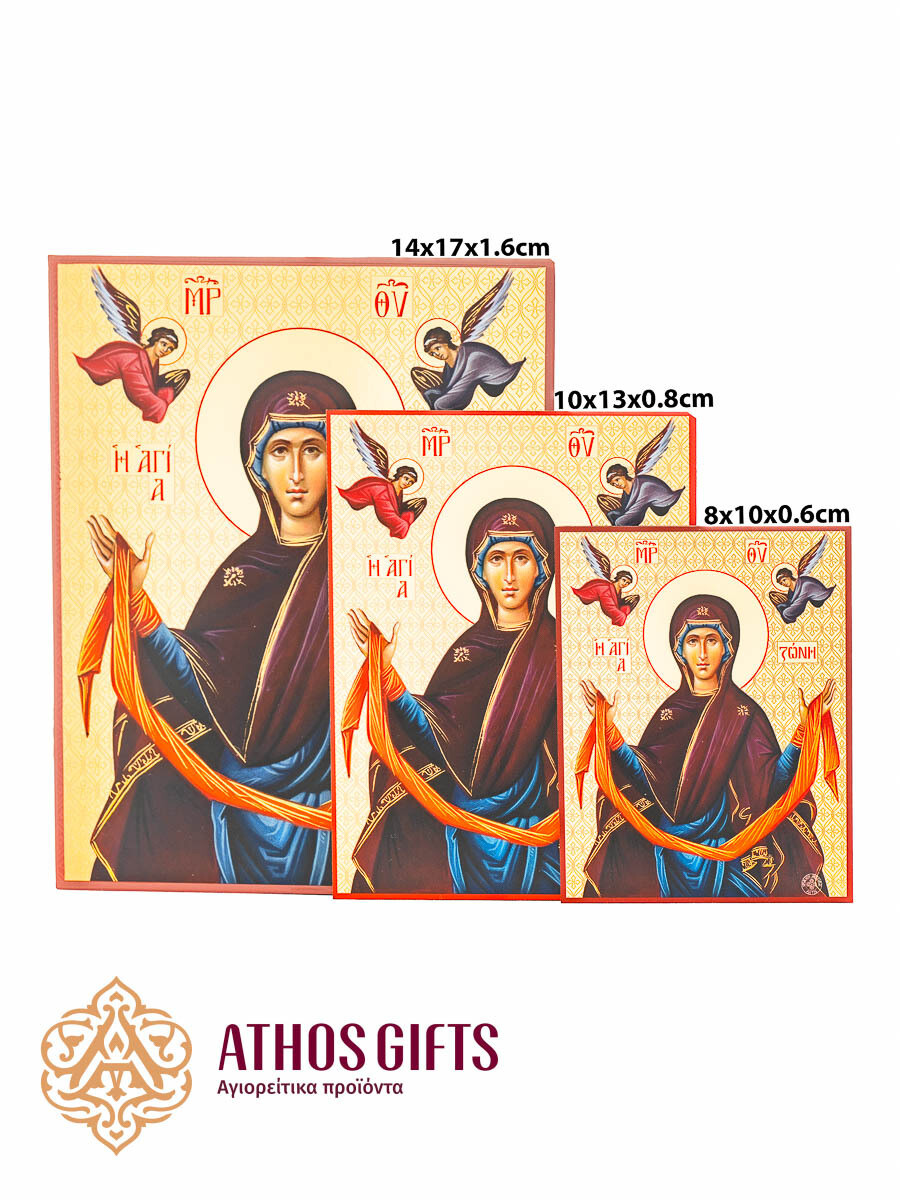
For many centuries, Mount Athos in Greece was the repository of the Byzantine iconographic tradition. The works that are kept in the monasteries today, as well as the frescoes of unparalleled beauty that adorn the temples of Athos, are considered to be some of the greatest relics of global cultural heritage. Byzantine iconography flourished in this sacred place, which has always hosted and still welcomes great artists of the Orthodox Christian iconography..jpg)
The influence of Athonite art upon modern iconographers
During the early 20th century, Byzantine iconographic art and Byzantine culture in general were rediscovered both by historians and scholars, as well as by the artistic community, which came to Athos to exercise their art through the works of the greatest Byzantine and post-Byzantine iconographers. Among others, Fotis Kontoglou, Spyros Papaloukas and other prominent figures of modern Greek art, traveled repeatedly to the Athonite state, where they stayed for long periods of time, copying the works of their predecessors.
The iconographers of the Athonite monasteries
Some of the most important iconographers of all times were Manuil Panselinos, Theophanes the Cretan and Frangos Katelanos. These three people, living in different periods of time and developing their own personal style, sealed the Athonite tradition with their art. The ever-increasing interest in Byzantine iconography encouraged more and more young people to travel to Athos in order to discover and study the works of these three masters, to admire and learn from them by creating their own copies.
Manuel Panselinos
Panselinos, one of the most famous names in the Byzantine iconographic tradition, was the man who created the frescoes of the Protaton in Mount Athos. However, his identity is ambiguous. We know that he lived and worked in Thessaloniki during the 13th-14th centuries, and was one of the leading iconographers of all times. In fact, Fotis Kontoglou mentions that Panselinos was a "an artistic personality of unusual power" (Fotis Kontoglou, "Panselinos", in Encyclopaedic Dictionary of Eleftheroudakis, vol. 10, Eleftheroudakis, Athens, 1927, p. 410). He is considered to be the main representative of the Macedonian school that prevailed in the region during the late Byzantine period of the Palaeologan dynasty. According to the recent study by Fr. Kosmas Simonopetritis, Panselinos is identified with Ioannis Astrapas, son of Eutyches and brother of Michael Astrapas, well-known iconographers of the same period (Fr. Kosmas Simonopetritis, "Who was Panselinos? The identity of the artist of Protaton and the definition of the conditions and time of the iconography", 6th International Scientific Workshop of the Mount Athos Center, Mount Athos Center, Thessaloniki 2022).
A characteristic feature of his style is the variety of colors, which creates an evocative and transcendent effect. Particularly noteworthy is the dark blue hue that is widely used in the background. The halos of the saints embrace their faces, while a red and white band delimits them, separating them from the background and intensifying their sense of glow. As for the figures, they are solemn. The posture of their bodies, their movements and gestures are equally austere.
Theophanes the Cretan
Theophanes Strelitzas Bathas, or Theophanes the Cretan, lived in the 16th century. As his name indicates, he came from Crete, and was one of the main figures of the Cretan school. He moved to Mount Athos in 1535; At around the same time, he painted the frescoes of the Katholikon of the Monastery of Great Lavra. His style and iconographic type correspond to the standards of the Cretan school he represented. His work is also influenced by the iconographic style of Western art, which was particularly widespread in Crete, where he was apprenticed, during the Venetian occupation.
Regarding the stylistic and morphological characteristics of his art, it is marked by simplicity of narrative and intense rhythm. His compositions are geometric, the figures are arranged symmetrically, and their poses seem to complement each other, creating a powerful effect. In terms of colors, a variety of combinations is noticed. The lines are soft and the light shading is simple and linear.
Frangos Katelanos
Katelanos was another iconographer who, though starting from icon painting, managed to cope perfectly with the fresco and its technique. He was the one who created the chapel of Saint Nicholas of the Monastery of Great Lavra in 1560. He was strongly influenced by Palaeologan and Italian art, while at the same time, in terms of his relationship with Cretan painting, considered to be an "anti-classical" iconographer. In particular, his figures are delicate, with faces youthful and full of light, while his representations are multifaceted. In combination with the architectural and decorative elements, the impression of a dense and meditative composition is created, so as to leave no empty space. In contrast to the Cretan tradition, Frangos Katelanos is influenced by Italian painting. Instead of mild and simple colors, he chooses intense tones that are richer and brighter. In addition, he chooses soft and discreet contours.
In combination with the architectural and decorative elements, the impression of a dense and meditative composition is created, so as to leave no empty space. In contrast to the Cretan tradition, Frangos Katelanos is influenced by Italian painting. Instead of mild and simple colors, he chooses intense tones that are richer and brighter. In addition, he chooses soft and discreet contours.
In conclusion
These three great artists shaped the art of Mount Athos by painting some of the most important temples and chapels of the Athonite state. Their talent renewed Byzantine iconography and brought out its expressive richness. Even today we keep returning to them and studying their works in an attempt to find answers to our contemporary research questions.
You are welcome to visit our online shop to buy icons, traditional products and braided bracelets handcrafted by the Athonite monks.
May the Lord, through the prayers of our patroness, the Holy Theotokos, bless you, your family and all your beloved ones!

